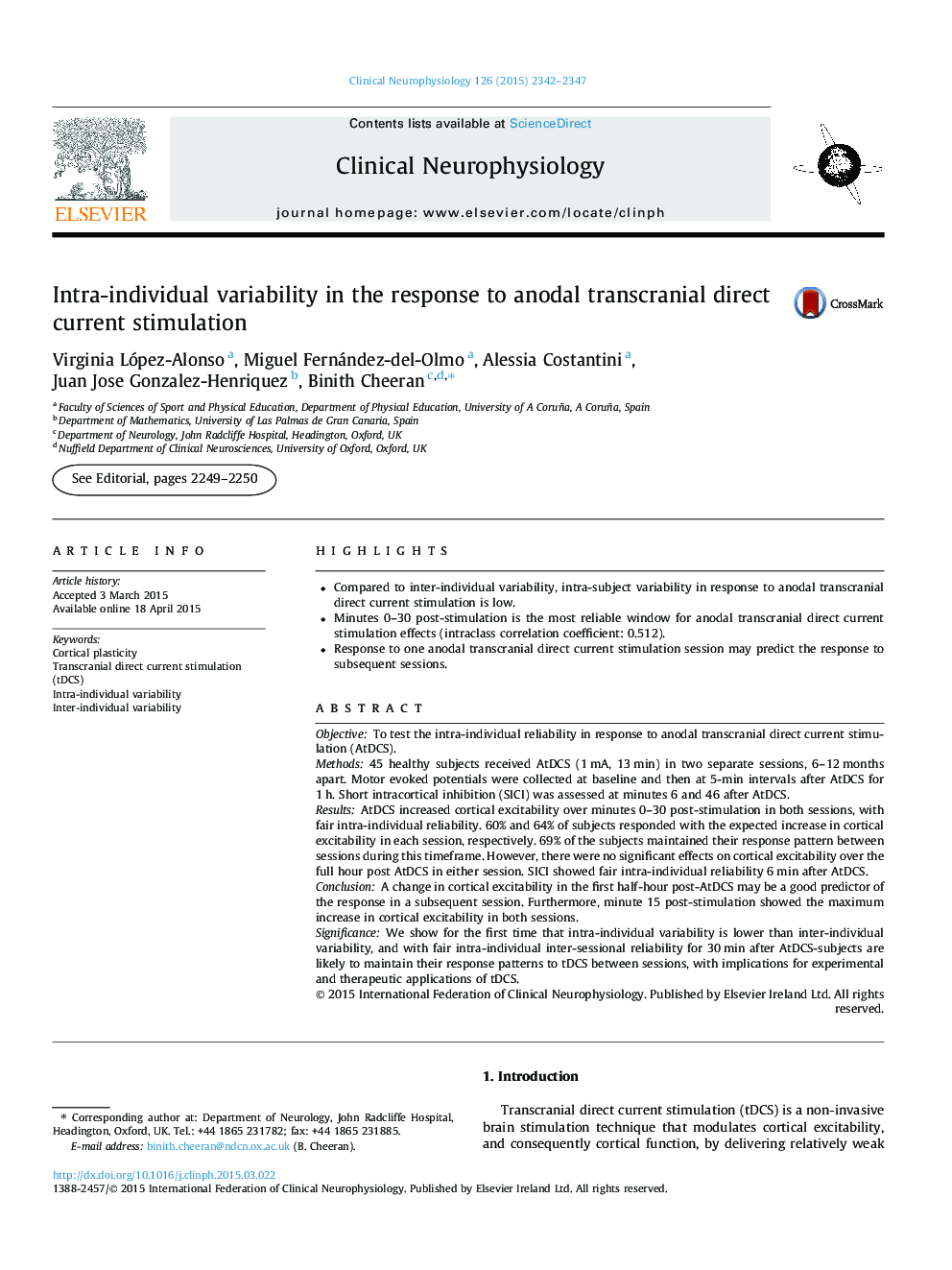| Article ID | Journal | Published Year | Pages | File Type |
|---|---|---|---|---|
| 3043147 | Clinical Neurophysiology | 2015 | 6 Pages |
•Compared to inter-individual variability, intra-subject variability in response to anodal transcranial direct current stimulation is low.•Minutes 0–30 post-stimulation is the most reliable window for anodal transcranial direct current stimulation effects (intraclass correlation coefficient: 0.512).•Response to one anodal transcranial direct current stimulation session may predict the response to subsequent sessions.
ObjectiveTo test the intra-individual reliability in response to anodal transcranial direct current stimulation (AtDCS).Methods45 healthy subjects received AtDCS (1 mA, 13 min) in two separate sessions, 6–12 months apart. Motor evoked potentials were collected at baseline and then at 5-min intervals after AtDCS for 1 h. Short intracortical inhibition (SICI) was assessed at minutes 6 and 46 after AtDCS.ResultsAtDCS increased cortical excitability over minutes 0–30 post-stimulation in both sessions, with fair intra-individual reliability. 60% and 64% of subjects responded with the expected increase in cortical excitability in each session, respectively. 69% of the subjects maintained their response pattern between sessions during this timeframe. However, there were no significant effects on cortical excitability over the full hour post AtDCS in either session. SICI showed fair intra-individual reliability 6 min after AtDCS.ConclusionA change in cortical excitability in the first half-hour post-AtDCS may be a good predictor of the response in a subsequent session. Furthermore, minute 15 post-stimulation showed the maximum increase in cortical excitability in both sessions.SignificanceWe show for the first time that intra-individual variability is lower than inter-individual variability, and with fair intra-individual inter-sessional reliability for 30 min after AtDCS-subjects are likely to maintain their response patterns to tDCS between sessions, with implications for experimental and therapeutic applications of tDCS.
